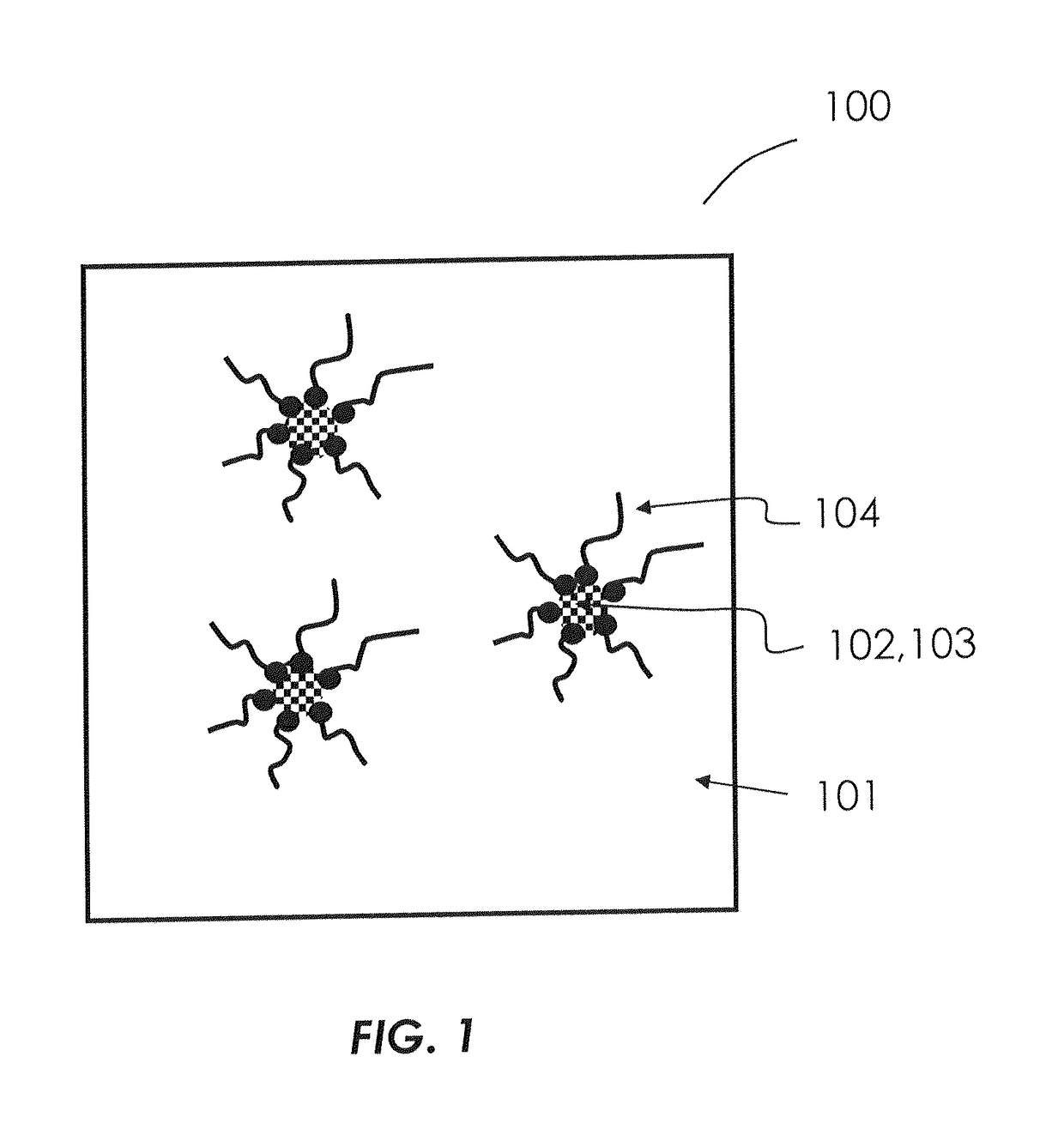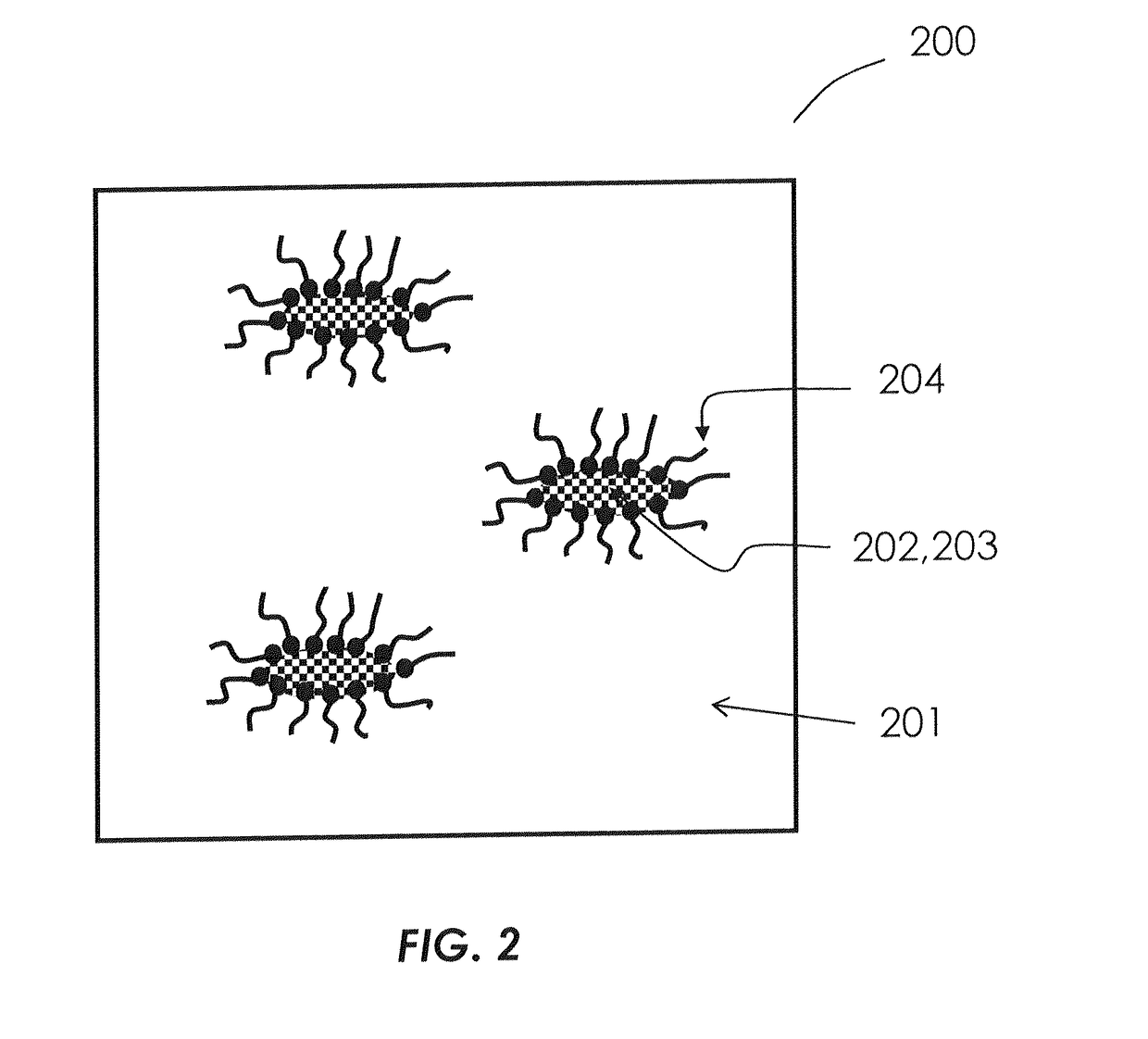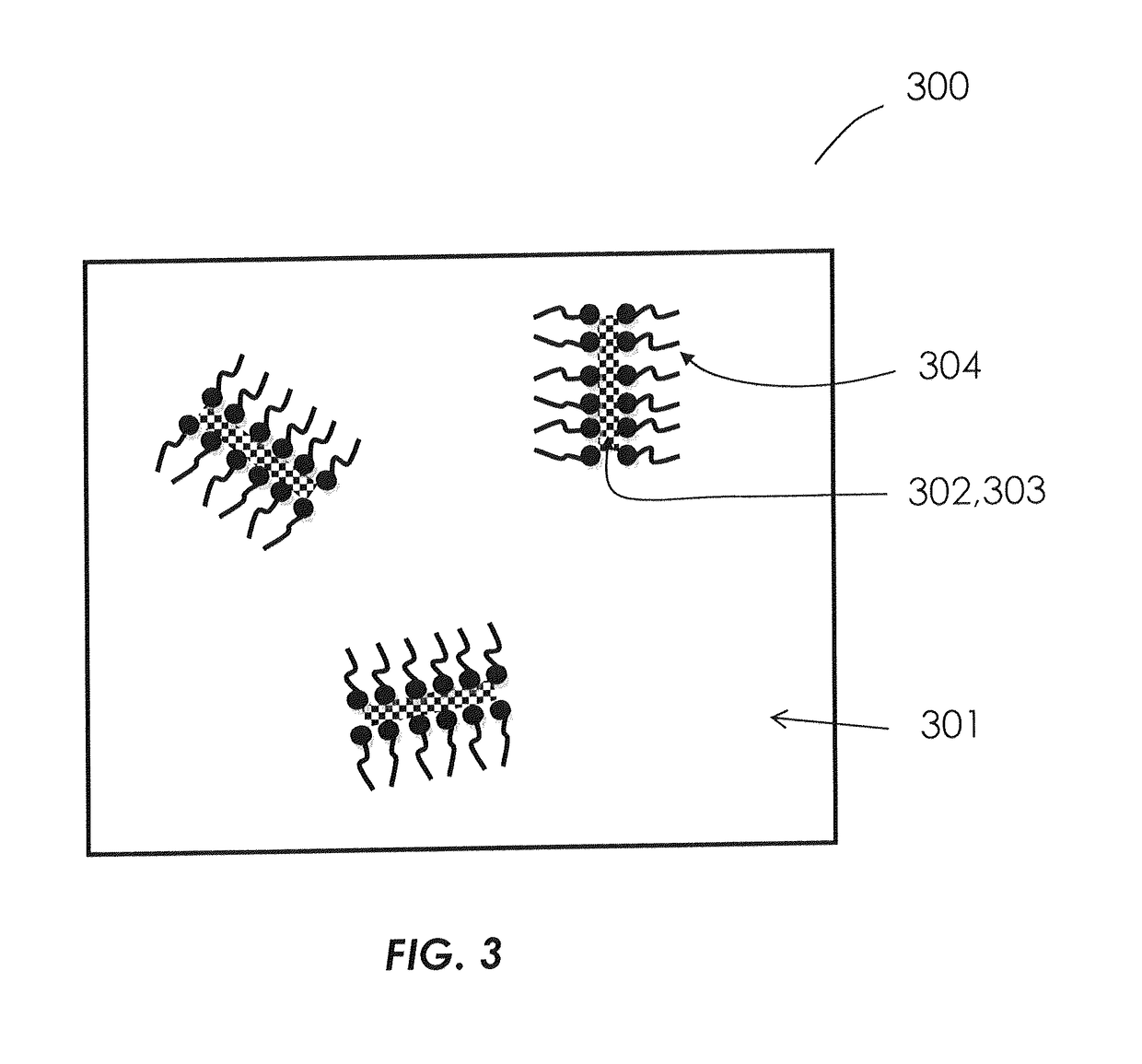Formulations of hydrophilic compounds
a hydrophilic compound and formulation technology, applied in the field of forms, can solve the problems of inconsistent performance, poor shelf stability, and difficulty in forming biologically active hydrophilic compounds into stable formulations with hydrophobic carriers
- Summary
- Abstract
- Description
- Claims
- Application Information
AI Technical Summary
Benefits of technology
Problems solved by technology
Method used
Image
Examples
example 1
Formulations Comprising Hydrophilic EGCG Compound in a Continuous Hydrophobic Phase with or without TPGS Emulsifier
[0116]The hydrophilic epigallocatechin gallate (EGCG, (catechins (tea extract) Sunphenon™ EGCg from Taiyo Green Power Co., Ltd of Wuxi Jiangsu, China—distributed as Stauber Item #24845 by Stauber of California)) compound was extracted from green tea. Propylene glycol (PG) was used as the hydrophilic solvent. Squalane (OleaClear™ Olive Squalane from Tri-K Industries of Northvale, N.J., US) and mineral oil hydrophobic solvents were tested as the continuous hydrophobic phase. TPGS emulsifier was obtained from Eastman Chemical Company. Sorbitan monooleate surfactant having an HLB value of 4.3 (SPAN™ 80 surfactant from Croda Inc.) was used as the emulsifier having an HLB value of less than 10.
[0117]The EGCG compound was dissolved in propylene glycol (PG) hydrophilic solvent to produce a solution (i.e., hydrophilic phase) having a weight ratio of EGCG compound to PG solvent o...
example 2
Formulation F Comprising Hydrophilic EGCG Compound in a Hydrophobic Squalane Solvent with a Stabilizing Component Comprising TPGS and Sorbitan Monooleate Emulsifiers
[0120]About 4 g of a hydrophilic EGCG compound was dissolved in about 20 g of a propylene glycol hydrophilic solvent, and the mixture was heated to about 60° C. to provide a solution (i.e., hydrophilic phase) having a weight ratio of the hydrophilic EGCG compound to the propylene glycol hydrophilic solvent of about 1:5. To about 500 mg of the solution, about 100 mg of TPGS emulsifier was added. The resulting solution was then combined with a mixture composed of 5000 g squalane hydrophobic solvent and 900 mg of sorbitan monooleate surfactant (SPAN™ 80 surfactant, HLB value of 4.3) and stirred vigorously to provide Formulation F of TABLE 1. Formulation F showed good stability at room temperature for at least one week without agitation. See TABLE 1, supra.
example 3
Formulations Comprising Hydrophilic EGCG Compound in a Hydrophobic Squalane Solvent Using Different Stabilizing Components
[0121]The EGCG compound was dissolved in propylene glycol (PG) hydrophilic solvent to produce a solution (i.e., hydrophilic phase) having a weight ratio of EGCG compound to PG solvent of about 1:5. The solution of EGCG was mixed with a predetermined amount of TPGS emulsifier, and then combined with a mixture composed of squalane hydrophobic solvent and sorbitan monooleate surfactant at a weight ratio of the hydrophilic solvent PG to the hydrophobic squalane solvent of about 1:10. To test the effect of the stabilizing component on the stability of the formulation, the formulations having various combinations and amounts of the stabilizing component were prepared as shown in TABLE 2. The formulations were tested for stability at room temperature.
[0122]As shown in TABLE 2, when squalane was used as the continuous phase for the formulation of EGCG hydrophilic compoun...
PUM
| Property | Measurement | Unit |
|---|---|---|
| Fraction | aaaaa | aaaaa |
| Fraction | aaaaa | aaaaa |
| Fraction | aaaaa | aaaaa |
Abstract
Description
Claims
Application Information
 Login to View More
Login to View More - R&D
- Intellectual Property
- Life Sciences
- Materials
- Tech Scout
- Unparalleled Data Quality
- Higher Quality Content
- 60% Fewer Hallucinations
Browse by: Latest US Patents, China's latest patents, Technical Efficacy Thesaurus, Application Domain, Technology Topic, Popular Technical Reports.
© 2025 PatSnap. All rights reserved.Legal|Privacy policy|Modern Slavery Act Transparency Statement|Sitemap|About US| Contact US: help@patsnap.com



